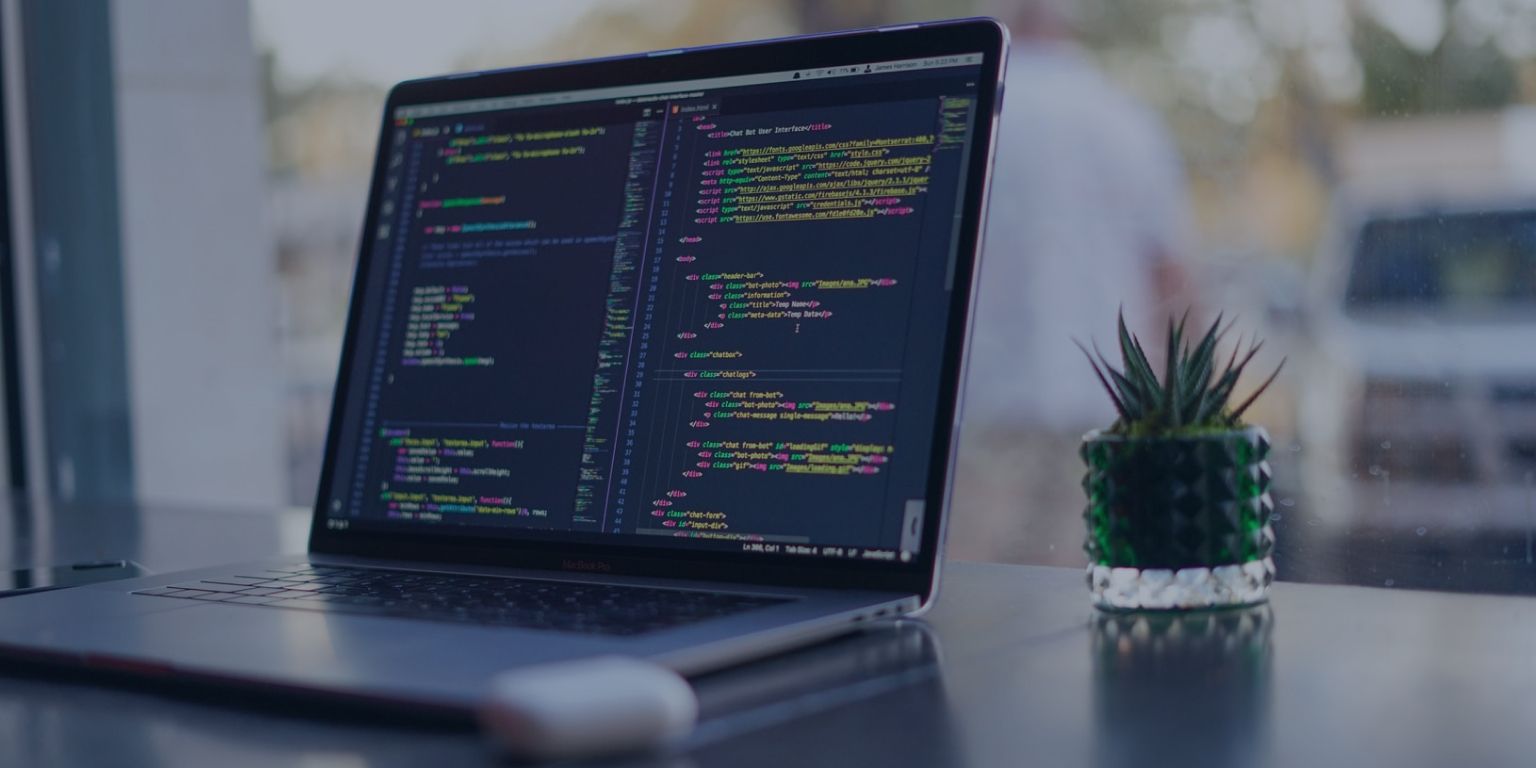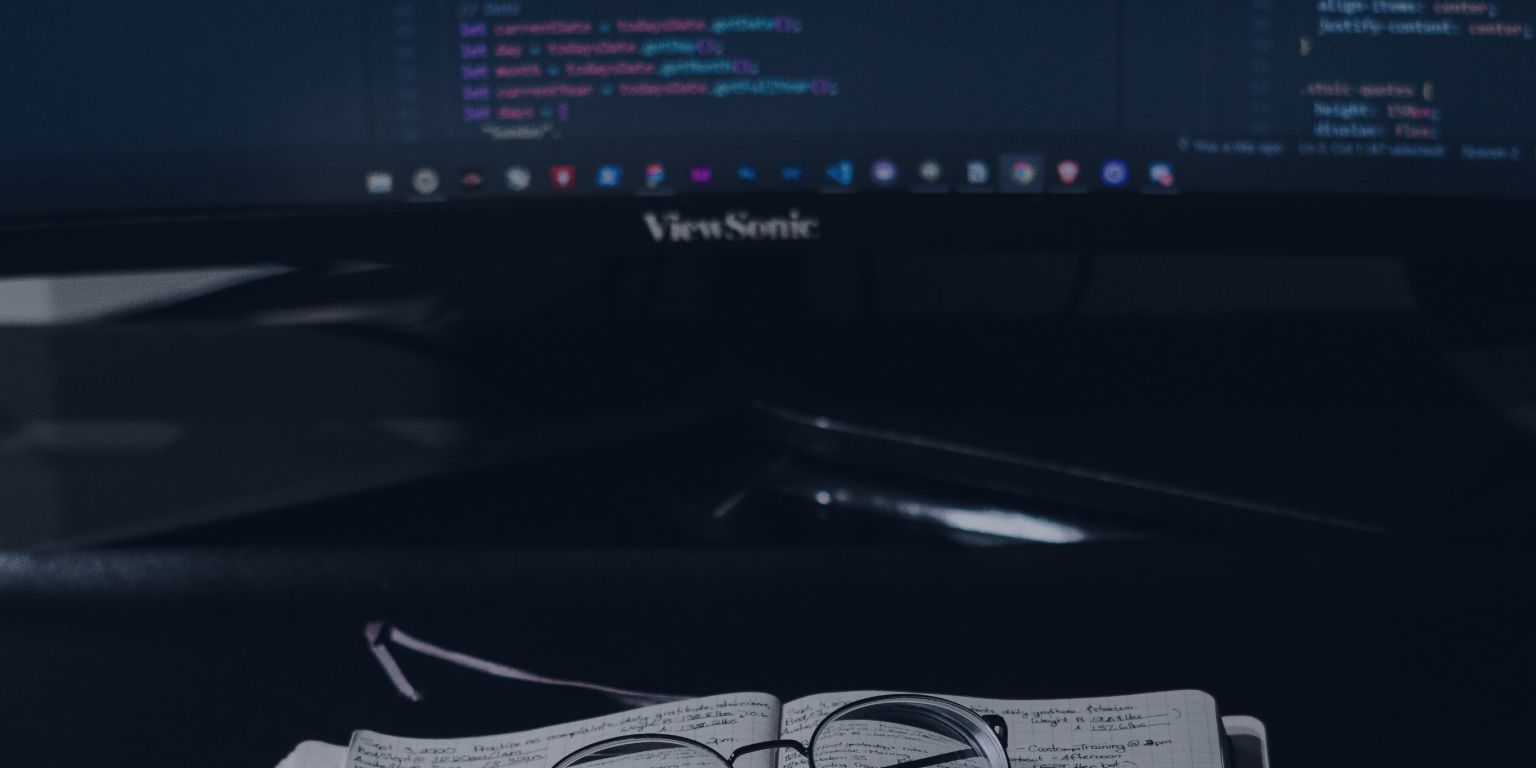How to check code quality?
17 November 2020 9 min read
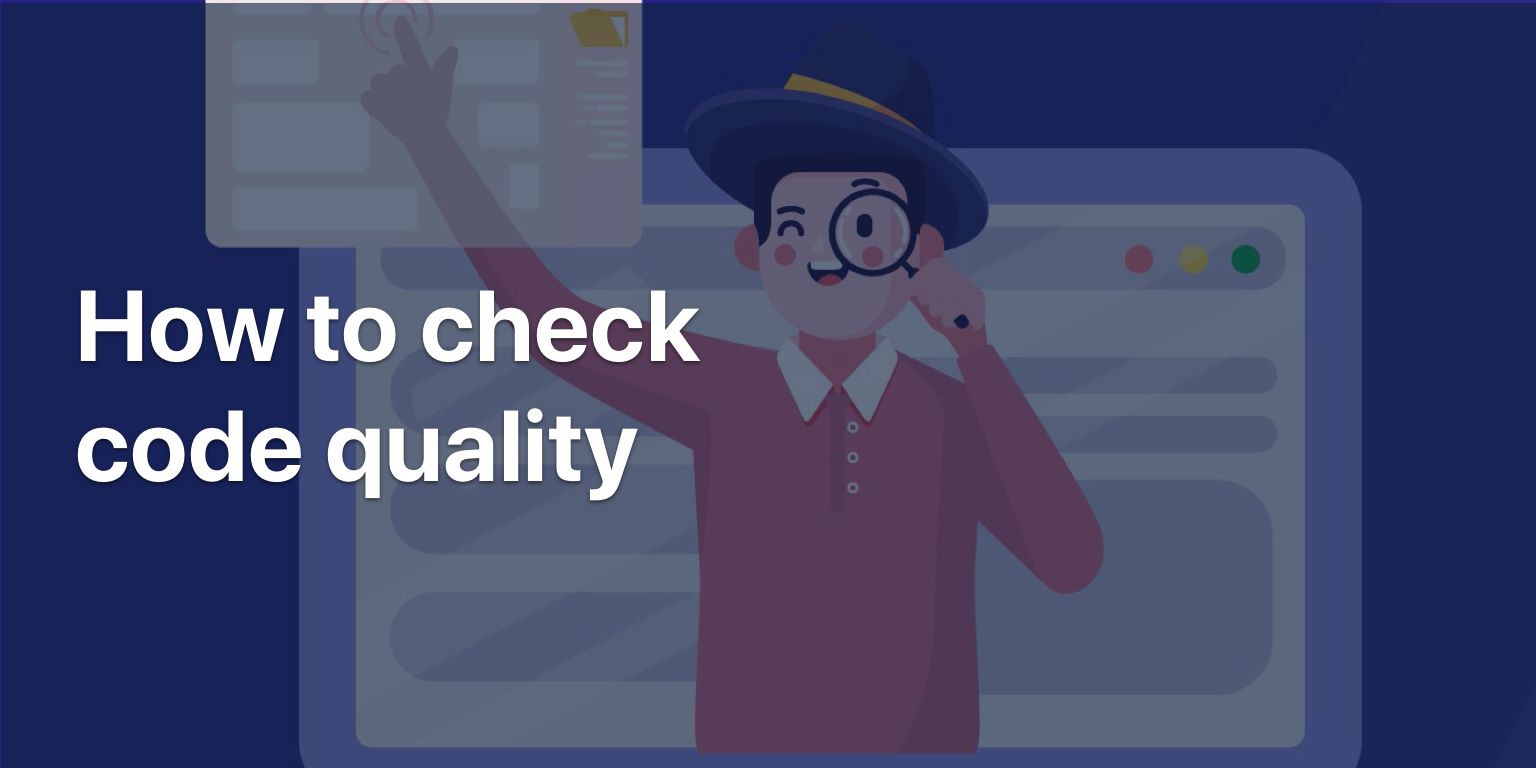
A variety of difficulties can be faced if the quality of the code is bad. Even the code with bad quality also becomes difficult for its own developer
The quality of the code tells whether the code is good or bad. The code quality matters for software quality. A software or an application with good quality of code will be easy to maintain. But on the other side, if the quality of the code is bad it will be difficult to maintain. Bad code quality can also lead to security risks.
Why should you care about code quality?
When you are writing a code, your aim is to gain a quality code as an output. For every function we perform on our job, keeping quality standards is the ultimate goal. But why should you spend extra hours and efforts when you actually can satisfy the supervisors with an average work?
You can find many compromised and less time consuming solutions for your project. To write a perfect code is a hard work. Most of the programmers use quality coding practices to avoid the accumulation of technical debt in the project. If you want to ensure the debt free code base, you need to produce an output that is fine enough to support the future sprints.
Quality coding is a practice that always pays off!
Consider Marlin, a programmer who is working on one of the components of a software project. The code he writes will be read and altered by many other programmers in the sprints later in the project. He may himself need to review the code in future. Therefore, he prefers to label the functions empirically and leave meaningful comments. This adds quality to his work in the form of increased readability. The code that is readable and well documented is always easy to maintain. These qualities help reduce the chances of creating technical debt.
A variety of difficulties can be faced if the quality of the code is bad. For example, the developer will face difficulty while adding a new feature to an application with bad code quality because it does not has comments or documentation. Even the code with bad quality also becomes difficult for its own developer.
A code with good quality has different characteristics. Below given diagram shows the characteristics of a code with good quality. The first way to check your code is its characteristics. If your code has these characteristics then it has good quality.
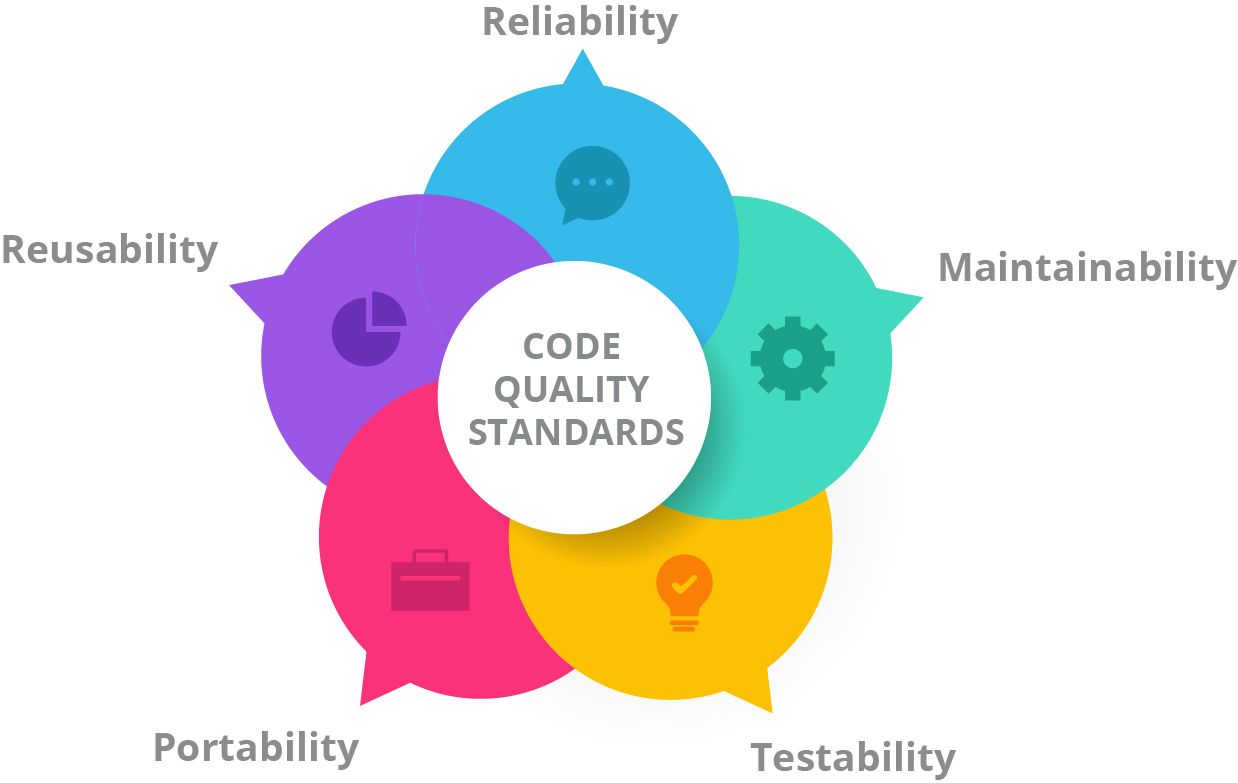
Reliability:
A code that is having good quality is reliable i.e. it has the ability to perform error-free operations whenever it runs. To make a code reliable it must be tested in every possible way by using the proper exception handling.
Maintainability:
One of the characteristics of a good code is that it is easy to maintain. The developer can add a new feature in less time with fewer efforts. Also adding a new feature does not affect the functionality of the existing code. This can be achieved by using the proper names for classes, methods, and variables and writing the comments with proper formatting of code.
Reusability:
Good quality code must be able to be reused. It means that the same code can be used for another function or software.
Portability:
Portability means the ability of code to be run in different environments. The code with good quality must be run in different environments without any error.
Testability:
The code also needs to be easy to be tested or verified. Less number of test cases should be required to verify it. The presentation and logic need to be separated.
Performs well on Code Metrics
Code metrics are another way to check the quality of your code. Code metrics are used to analyze the complexity of code and provide better insights to the developer.
To check the quality of your code, analyze it on atleast following three matrics:
• WMFP (Weighted Micro Function Points)
• Halstead Complexity Measures
• Cyclomatic Complexity
If the code has more complexity then it has a bad quality otherwise the quality is good. Some of the metrics are given bellows with a detailed description that can be used to quantify the code quality.
WMFP (Weighted Micro Function Points)
This metric is an algorithm that breaks down your code into different micro functions. For each of these micro functions, it produces the complexity metric. In the end, it gives a single score based on these results. The complexity of code is measured automatically by WMFP.

Halstead Complexity Measures
In 1977, Maurice Howard Halstead introduced these measures. It includes different metrics such as the Program length, Program volume, Halstead vocabulary, Program level, Minimum potential volume, Program difficulty, Programming effort, Language level, Intelligence content, Programming time. Measuring computational complexity is its primary aim. A code with less complexity can easily be maintained.
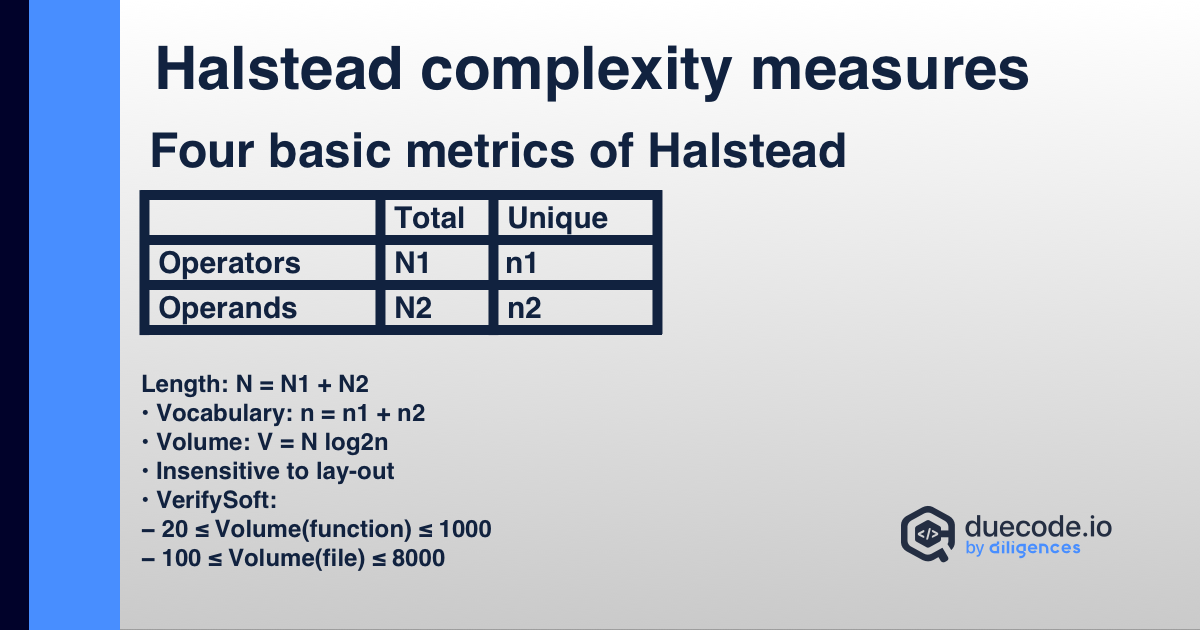
Cyclomatic Complexity
The structural complexity of the code is measured by this metric. Total linearly independent paths are counted for this purpose. Methods having cyclomatic complexity of more than ten probably contains more defects. Cyclomatic complexity tells the developer about the difficulty of code for testing, maintaining, and troubleshooting.

Measuring Quality Through Quality Tools
Coding mistakes can be easily detected when you have a tool that performs the different checks on the spot. Different tools are available that can be used to ensure the code has good quality. These tools continuously check the source code to tell the developer about the code quality. Some of the tools are listed below that can be used by the developers.
Duecode
It tracks things like user-by-user code contributions over time, ticket activity, and how various team members handle things like pull requests in your team's code repositories on platforms like GitHub. Duecode collects historical git data to provide you with important insights into the workflow patterns of your engineering teams. You don't need to be a coder to understand code quality using Duecode.
Crucible
Atlassian's Crucible is a collaborative code review platform and is largely geared towards the enterprise, and certain capabilities that enable review of a code base.
SonarQube
An open-source platform built by SonarSource for continuous code quality inspection and static code analysis to find defects, code smells, and security vulnerabilities in code written in more than 20 programming languages.
Upsource
A source browser and adaptive review program that handles Git, Mercurial, Subversion, and Perforce. It provides static code analysis and code-aware mobility in a web UI for Java, PHP, JavaScript, and/or Kotlin applications.
Review Board
An open source, web-based code review tool that allows the demo on their website or download and instal the programme on your own server to test this code review tool.
Code Climate
It is an open source and expandable platform for assuring code health. Using the Teams feature of the program, you may improve your user experience by managing massive groups.
Phabricator
It’s also one of the popular code review tool, bug tracker, and the Phriction wiki are all part of the Phabricator suite of web-based software development collaboration tools. Git, Mercurial, and Subversion are all supported by Phabricator.
ESLint
In a nutshell, this is ESLint. Nicholas C. Zakas originally designed ESLint, an open source JavaScript linting software. Linting is commonly used to identify problematic patterns or code that does not follow specific style rules.
Klocwork
In C, C++, Java, and C# code, Klocwork is used to discover security, safety, and reliability concerns. Several desktop plug-ins for developers, as well as metrics and reporting, are included with the solution.
Codacy
Codacy conducts functional testing and analyzes code quality across every contribution and review query, reflecting upon that consequence of each change and pull request, as well as concerns such as code style, best practices, security, and more.
Pylint
This tool detects software bugs, bugs, styling inadequacies, and questionable patterns in source code. Pylint is a Python program reviewing tool that looks for errors, tries to impose a coding standard, and analyzes software defects
JSHint
JSHint examines the raw data of your program and alerts you to common errors and probable issues. JSHint is a JavaScript-based static analysis tool that aids engineers in spotting inherent pitfalls in their JavaScript code and implementing their squad's JavaScript coding norms.
What Else We Can Do To Ensure Code Quality?
Stick to Proper Code Guidelines:
The code can be checked against the guidelines to check its quality. For example, there are different guidelines to write a good code. It includes proper indentation so that it should be easily readable, there should be proper comments about each method that will help the developer to know about the purpose of each method. It will help in making the changes. If the code follows the guidelines then it has good quality.
Excel in Code Style and Correctness:
Is your code composed effectively? Simply make sure to make the code style steady across the colleagues. Every engineer should utilize a similar code style definition. Recognize copied code and discover potential execution issues. Coding style is comprised of various little choices dependent on the language. These include how and when to utilize remarks? How much number of spaces or tabs is there per code? How legitimately are the factors named? And much more!
Test More Frequently:
Another way to check the quality of your code is by testing. The code can be executed against different inputs. If the code performs well against different inputs then it has good quality.
Keep Track of Test Coverage:
Lamentably, now and again you battle to convey another delivery on schedule. Therefore you may not compose appropriate tests that cover your code.
Or think of the last test you made that was not able to cover every potential stream. Thus, there is a need of few measurements to check if your code has been adequately tried or not.
Now you can have an ideal checklist to measure the code coverage before designing a test! Check it in parts for the following compulsions:
Coverage of Statement:
Number of articulations executed during a test isolated by all assertions
Coverage of Branch:
Number of executed conditions isolated by all conditions
Coverage of Capacity/Performance:
Number of executed capacities isolated by all capacities
Coverage of Lines:
Number of lines ran during a test isolated by all lines
An effective improvement work process helps a decent engineer become extraordinary and incredible designers uncommon. These days, CI/CD is the most noticeable strategy to make that progress. CI/CD represents Continuous
Integration/Continuous Deployment. Nonstop Integration is the act of testing each change done to your codebase naturally, as early as could really be expected, while, Continuous Deployment follows the testing that happens during Integration and pushes changes to an orchestrating or creation structure.
Review:
The code can be reviewed by the developer to find bugs that can be removed to make it a good quality code. One of the common ways is to ask for a review from different developers. If they found more bugs in the code then it has bad quality.
Employing Continuous Integration tools:
CI is the most quicker and viable method to ensure quality in your coding projects. Employing these tools, you can make certain that your framework is working! It makes analysis easy, enabling you to realize new highlights as well as rapidly installing new updates.
You might be wondering, how can you achieve that? It’s made possible by mechanizing the structure, testing, and arrangement of uses. You choose what and when you need to test? And the rest is all automated! No need to tell, it makes things easier and less costly .
How To Monitor Code Quality in Real Life?
Here in duecode, we have a lot of charts that show the code quality of your code. Basically, all of them are based on violations that the developers make. If the developer fixes the violation, overall code quality will be improved.
We believe that our charts show an overall picture and help identify a problem, and then you should go to violations and check them.
For instance, go to the Analysis -> Code Quality tab. Here you'll find all your commits and code quality ratings.
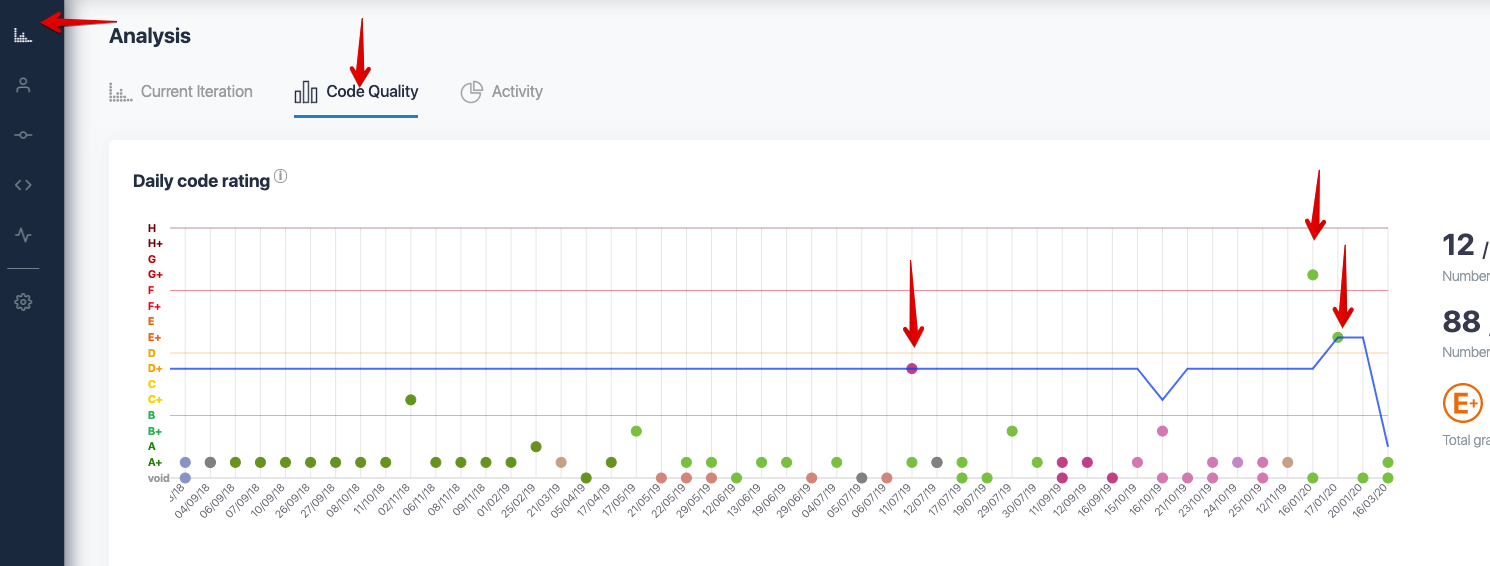
We recommend checking all the commits with bad marks and check all the details of those commits. Especially pay attention to the violations.
Don't have a duecode account? Sign up now and give it a try. It's free.
Conclusion
Good quality of the code helps in developing a good application that can easily be maintained and extensible in the future according to the requirements. So the code should be properly checked for quality through metrics, various software mentioned above and through consistent reviews. This not only reduces future obligations but also makes the code easy to handle and maintain by other developers too.
Want to learn more about code quality? Take a look at the "Complete Code Quality Guide".
FURTHER READING
- Complete Code Quality Guide
- Code Quality Tools
- Code Quality Metrics
- Code Quality Standards
- How to measure, check and improve code quality:
-- How To Measure Code Quality
-- How Can I Improve My Code Quality
-- How To Build A Website With Good Quality Code?
Updated on the 1st of November, 2021



